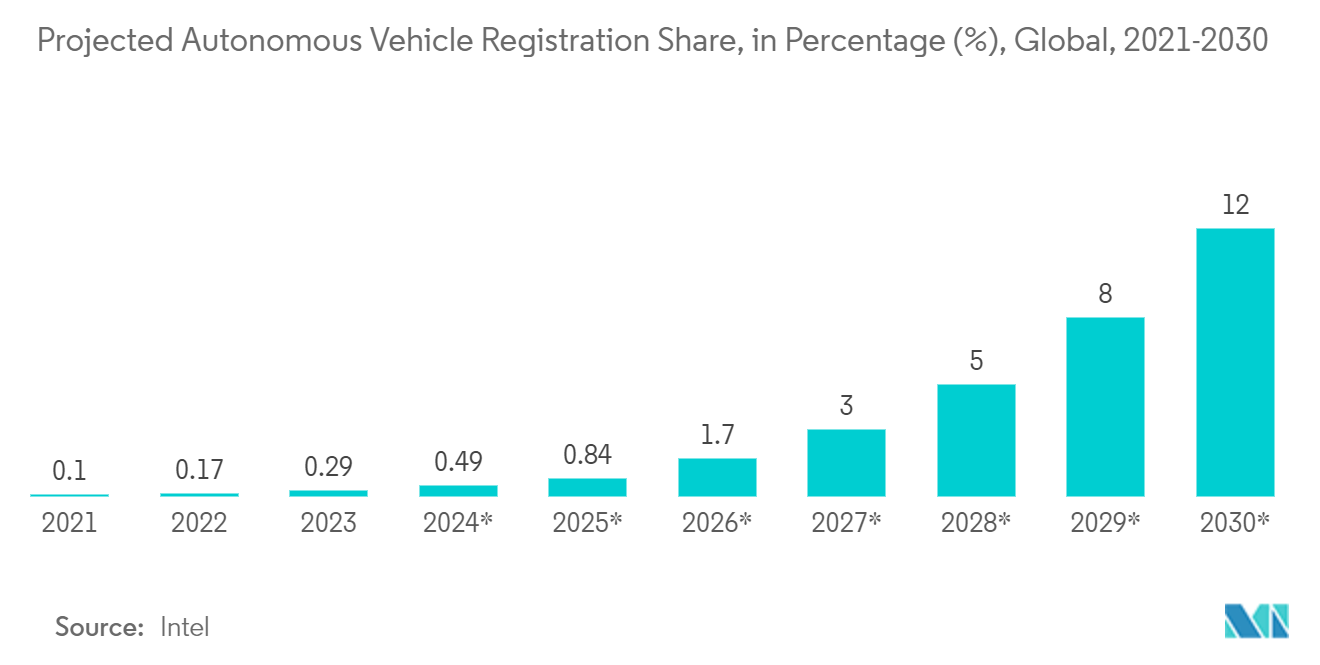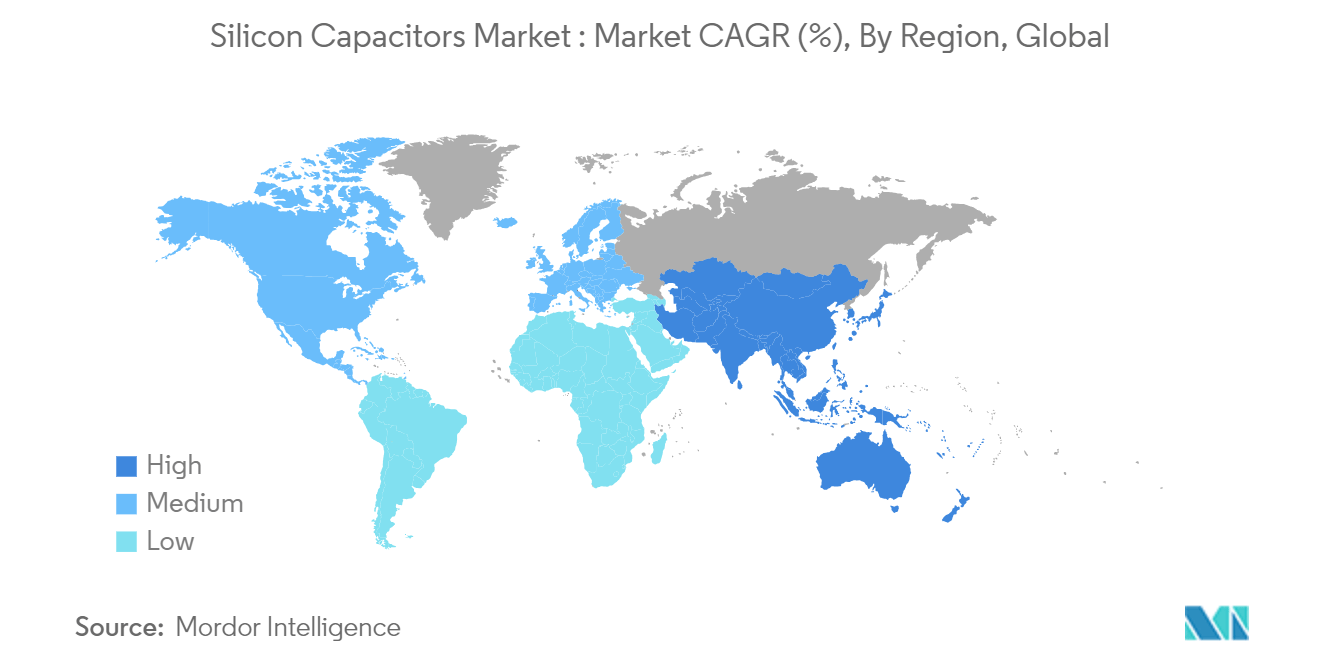Market Trends of Silicon Capacitors Industry
Automotive Sector to Witness Major Growth
- One factor propelling the global silicon capacitor market is the growing acceptance of miniaturization in the automotive sector. Modern automotive technologies, such as autonomous driving systems, enhanced driver assistance systems, and electric cars (EVs), depend on the trend toward smaller, more economical, and higher-performing electronic components required in ADAS.
- Due to the low equivalent series resistance (ESR) of silicon capacitors, they are well known for being extremely energy efficient. This is crucial for EVs and HEVs, which depend on effective power management to increase battery life and driving range. The broad temperature range (-55 °C to +150 °C) over which silicon capacitors may function effectively makes them essential for automotive applications subjected to harsh climatic conditions. Silicon capacitor's small dimensions enable more adaptable and space-efficient designs to fit into the constrained interior of contemporary EV automotives.
- According to IEA, Electric car sales in emerging nations have more than doubled, but sales volumes still need to grow. In the first quarter of 2023, sales increased by 25% compared to the same period in 2022. Sales climbed significantly in the first half of 2022, and EIA implies that the global EV sales share was over 18% by the end of 2023. Therefore, silicon capacitors are among the miniaturized components in high demand as the industry moves toward smaller and more efficient power systems, and their demand is closely correlated with the significant increase in EV manufacturing.
- Signal integrity and high-speed data processing are critical to ADAS and autonomous cars. Silicon capacitors are strong candidates for high-frequency applications since they offer the reliable performance needed for sophisticated radar, LIDAR, and camera systems. Silicon capacitors' exceptional endurance and dependability guarantee steady performance throughout the car's life cycle, which is essential for safety-related applications in autonomous driving.
- According to Intel, the share of registered autonomous vehicles is expected to reach about 12% by 2030. The increasing prevalence of autonomous driving systems will drive demand for dependable high-frequency components such as silicon capacitors.
- The automotive industry's push for miniaturization drives the need for silicon capacitors. Reliability, performance, and compactness are critical for electrical components such as silicon capacitors, which are becoming more important in cars by integrating electric drivetrains, autonomous driving technologies, and intelligent entertainment systems. In addition to increasing the capabilities of modern cars, this factor is driving significant growth in the global silicon capacitor industry.

Asia-Pacific to Witness Significant Growth
- The region, particularly countries like China, Japan, South Korea, and Taiwan, is at the forefront of technological innovation. These countries are significant semiconductor manufacturing and electronics players, providing a solid foundation for adopting and developing silicon capacitors.
- According to the Telenor IoT Megatrends Report, the adoption of IoT in Asia-Pacific is expected to grow at an unprecedented rate, and more than 38.9 billion IoT devices will be there by 2030. The report stated that the revenue from cellular IoT connections would grow continuously.
- In February 2023, the Government of India allocated INR 16,549 crore (USD 2011.77 million) to the Ministry of Electronics and Information Technology, owing to the growing demand for electronics post-COVID-19. The government aims to invest INR 300 crore (USD 36.47 million) in the semiconductor mission to boost the semiconductor manufacturing and display manufacturing industry. This is expected to fuel the production of consumer electronics.
- Increasing demand, along with supportive government regulations to make the country an automotive manufacturing hub, is further driving the growth of the automotive sector in the region. For instance, India's Automotive Mission Plan 2026 is a mutual initiative by the Government of India and the Indian automotive industry to lay down the roadmap for the industry's evolution.
- The rise in demand for energy supply in the automobile industry has been a significant driver for growth in this sector. Exhaust emission control norms have become even more stringent in the country.
- For instance, to promote the manufacturing of hybrid and electric vehicle technologies to achieve electrification by 2030 ultimately, the government has even launched the Faster Adoption and Manufacturing of Hybrid & Electric Vehicles in India Under the National Electric Mobility Mission Plan (NEMMP) as silicon capacitors are increasingly used in the electronics and subsystems of electric vehicles. Such trends are expected to support the growth of the market studied.


